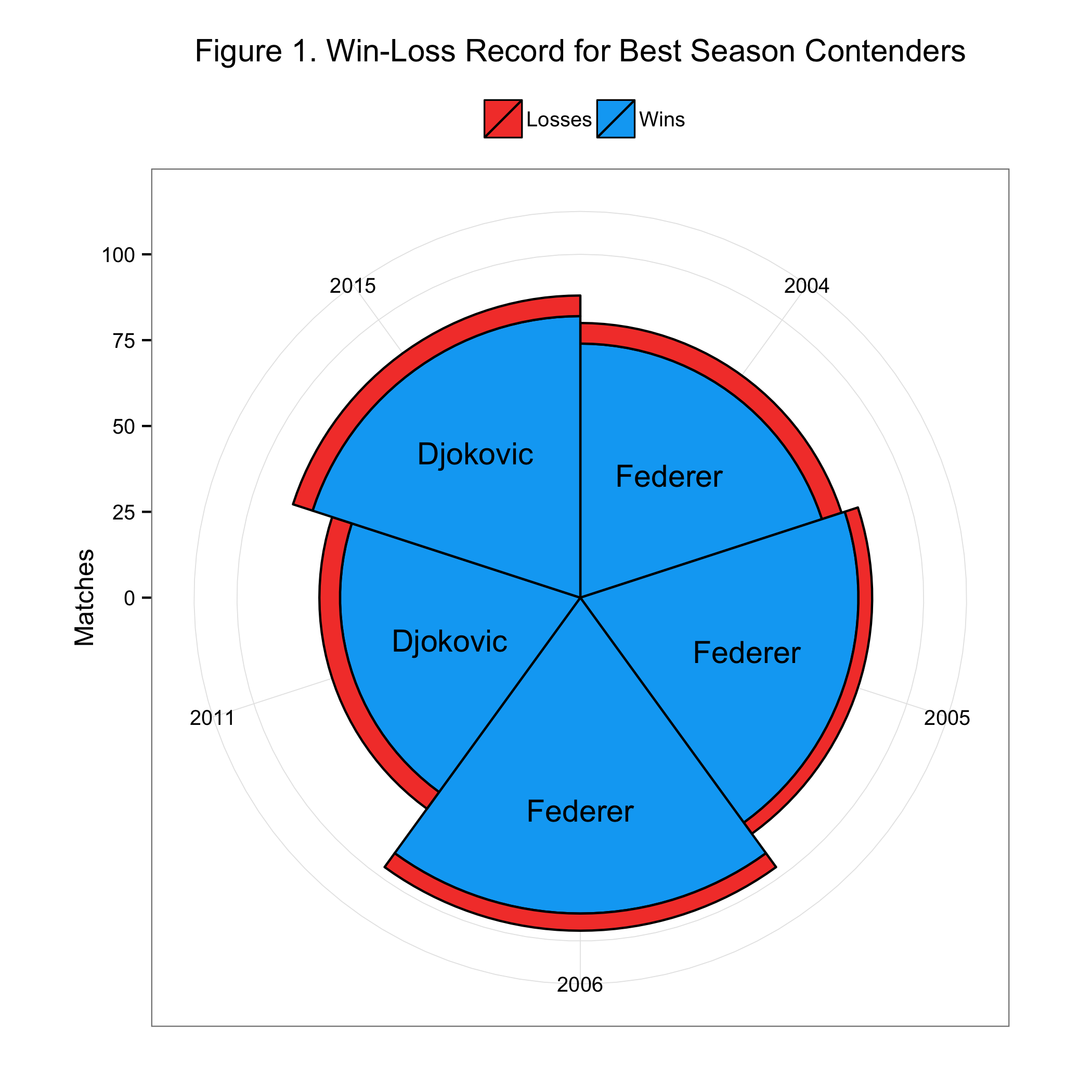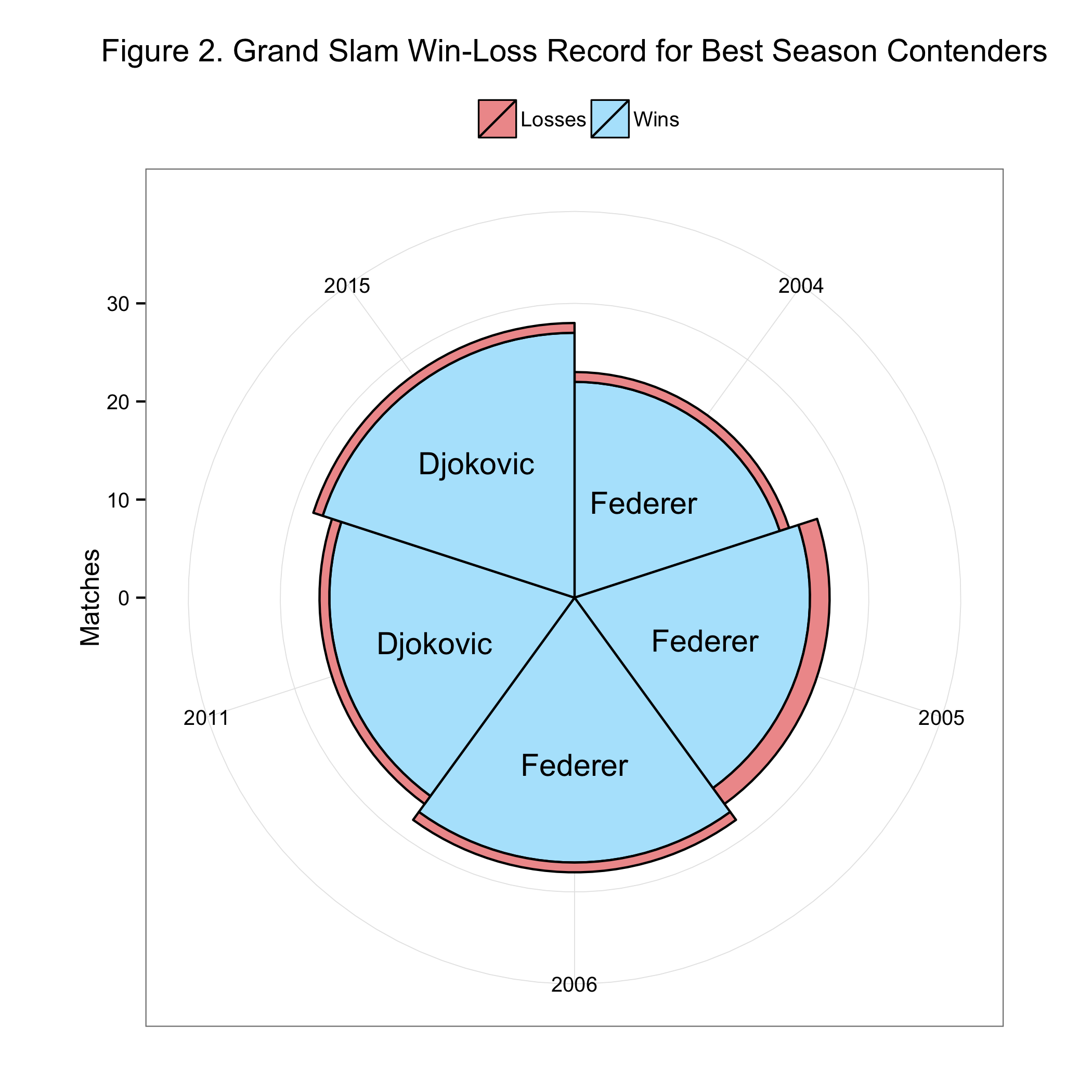Another Take on the Best Season Debate
28 Nov 2015After solidifying a career best season with the win of the ATP Tour Finals, definitive World No. 1 Novak Djokovic set the tennis world chattering about where his 2015 season stood in the history of best tennis seasons. It is fitting for these discussions that Djokovic’s last win of 2015 was over Roger Federer, the current World No. 3 whose achievements in the mid 2000s have often been argued to be some of the greatest in the Open Era.
With the last ATP trophy raised in 2015, how do the best seasons of Djokovic and Federer’s careers to date now compare?
Among the tennis writers who have weighed in, there hasn’t been a consensus on which season to crown. The divide seems largely between Federer’s 2006 season—touted as best by no less than Djokovic’s coach, Boris Becker—and Djokovic’s 2015.
The reason for the differing opinions is the different ways commentators have weighed wins. Some have emphasized overall win percentage, giving an equal value to each win, which would make Federer the greater champion in any of the 2004-6 seasons compared to Djokovic’s 2011 70-6 record and the 2005-6 seasons better than the 82-6 record Djokovic achieved this year (Figure 1).

Other writers have argued that win percentage alone doesn’t tell the whole story because it doesn’t give enough importance to the performance at Grand Slams. Djokovic won 3 of 4 Grand Slams in both 2011 and 2015, but reached all Grand Slams finals only in 2015. Federer won 3 of the Grand Slams in 2004 and 2006 but 2006 was the only year in which he reached all of the finals, making his 2006 Grand Slam record identical to Djokovic’s 2015 (Figure 2).

The balance of win percentage and results at Grand Slams would seem to give Federer’s 2006 season the edge. Yet this ignores the comparative strength of the field in 2006 compared to 2015 and also doesn’t consider the difficulty of the particular opponents Federer faced in 2006 compared to the opponents Djokovic faced this year. I recently presented a version of the statistic WAR for tennis that takes these factors into account, allowing one to compare two different seasons with opponent-adjusted wins.
What does WAR tell us about Djokovic and Federer’s best seasons?
Using the same methodology as described in my previous post, I have charted the opponent-adjusted wins over the 5 contenders for best season (Figure 3). A key factor in determining WAR is the ability of the replacement player in a given year. Interestingly, replacement player strength was lowest in 2015 (with a Pythagorean win expectation of 38%) and ranged from 42-44% in all of the other seasons considered. This suggests that the strength of field was highest in 2015 (as replacement players had lower win expectations), which would tend to make a win in 2015 more impressive than an otherwise equivalent win in 2004-2006 or 2011.
In spite of the difference in the overall strength of field, the mix of opponents Djokovic faced in 2011 made it his strongest seasons match-for-match until the Shanghai Masters in 2015, when, by playing more matches at a similarly high-level, he finally surpassed his 2011 WAR.
Djokovic ended 2015 with a WAR of 46.8 wins (Figure 3). Neither the 2004 or 2005 WAR for Federer’s seasons reached this level. Although 2005 came close, Federer’s loss to Rafael Nadal in the semifinals of the French Open was a major setback.
By the 88th match, Federer’s 2006 WAR of 44.2 was also behind Djokovic’s season-ending achievements, due largely to a string of clay court losses to Rafael Nadal. It took the win in his 93rd match of 2006 for Federer to overtake Djokovic’s 2015 WAR. With his perfect record at the Tour Finals in 2006, Federer ended his season with a WAR of 49.6, a difference of 2.8 effective wins.
Djokovic looked almost flawless this season yet it appears he still has some way to go to outdo Federer’s herculean 2006.
If you liked this story, share it with your followers or follow this site @StatsOnTheT on Twitter.
